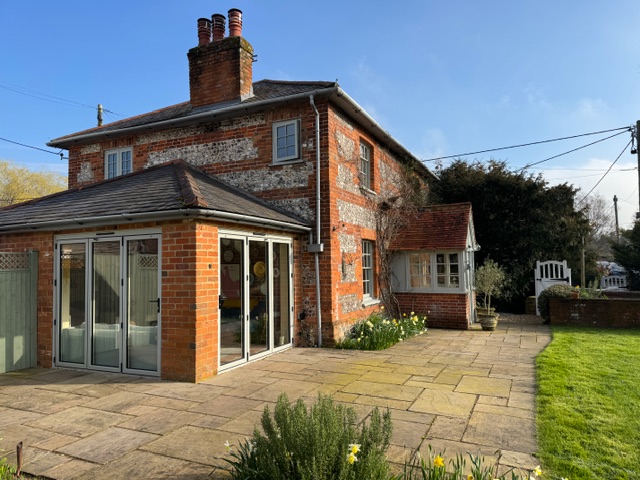
Timber - PVC - Aluminium - Windows, Doors & Conservatories in Hampshire
Do I Need Planning Permission for a Conservatory? The 2025 UK Guide
Do I Need Planning Permission for a Conservatory? The 2025 UK Guide
📌 Quick Summary: The Rules in 2025
- The Good News: Most standard conservatories fall under “Permitted Development” and do NOT need full planning permission.
- The Exceptions: You WILL need permission if you live in a Listed Building, Conservation Area, or exceed size limits (e.g., >4m deep).
- The Distinction: Planning Permission (Size/Looks) is different from Building Regulations (Safety/Insulation). Know the difference.
It’s the most common question we hear from homeowners: “I’d love a new conservatory, but will I need planning permission?” The thought of lengthy applications and council red tape is enough to put many people off.
The good news is that for most conservatory projects in the UK, the answer is no, you will not need full planning permission. Most projects fall under what is known as “Permitted Development Rights.”
This guide will explain exactly what that means, what rules your project must follow, and when you *do* need to apply.
What Are ‘Permitted Development Rights’?
In simple terms, Permitted Development (PD) rights are a set of rules from central government that allow homeowners to make certain improvements to their homes without having to go through the full planning permission process. Conservatories, orangeries, and single-storey extensions are often covered by these rights, provided they meet a strict set of criteria.
The Key Rules for a Conservatory to be ‘Permitted Development’
For your new conservatory to be considered Permitted Development, it must follow all of the rules below. Note that these apply to houses, not flats or maisonettes.
- Position: The conservatory must be at the *rear* of the house. A conservatory on the side of a house has different, stricter rules and one at the front will always require planning permission.
- Size (1): It must not take up more than 50% of the land around your original house (your garden).
- Size (2): It must not extend more than 4 metres from the rear wall of an attached house, or 3 metres for a detached house. (These limits can be larger under a ‘Neighbour Consultation Scheme’).
- Height (1): It must not be higher than the highest point of your existing roof.
- Height (2): The eaves height (where the conservatory wall meets the roof) must not be higher than the eaves of your existing house.
The Big Confusion: Planning Permission vs. Building Regulations
This is the second-biggest hurdle for homeowners. These are two completely separate things.
The Difference Explained
What is it?
Controls the location, size, and appearance.
The Question
“Is this structure appropriate for the neighbourhood?”
Exempt?
YES (if it meets PD rules).
What is it?
Controls the construction standards (safety/insulation).
The Question
“Is this structure built correctly and safely?”
Exempt?
YES (if < 30m² & separated by external doors).
A conservatory can be exempt from Building Regulations if it meets all of the following criteria:
- It is built at ground level and is less than 30 square metres in floor area.
- It is separated from the main house by external-quality walls, doors, or windows.
- It has an independent heating system separate from the main house’s central heating.
- All glazing and any fixed electrical installations comply with their own specific building regulations.
The Big Exception: Listed Buildings & Conservation Areas
Permitted Development rights do not apply or are severely restricted if your property is:
- A Listed Building
- In a Conservation Area
- In an Area of Outstanding Natural Beauty (AONB) or National Park
- Your property has permitted development rights removed (common on modern housing estates)
| Want the Full Picture? |
|---|
|
Planning is just the first step. To see how these structures are built and what styles are available, read our main pillar post:
Conservatories Explained: Benefits, Types, and Costs. |
Frequently Asked Questions (FAQs)
For planning permission purposes, there is no difference. Both are treated as ‘extensions’ and are subject to the same set of Permitted Development rules regarding size, height, and location.
While you may not need planning permission, you might still need to comply with the Party Wall Act 1996 if your foundations are within 3 metres of your neighbour’s property. It’s also just good courtesy to let them know your plans!
If you build a structure that does not meet Permitted Development rules and you haven’t applied for planning permission, the council can take enforcement action. This could force you to alter or even demolish the entire structure at your own cost. It’s not worth the risk.
If you are in any doubt, the safest option is to contact your local council’s planning department or apply for a Lawful Development Certificate (LDC). This is a formal application where the council will confirm in writing that your project is lawful and does not need planning permission.
More Conservatory Guides
Planning your new extension? Read our expert guides on design, roofs, and refurbishment:
⭐ Real Reviews, Real Peace of Mind
Our reputation is built on over 700 independent reviews.
- Which? Trusted Traders: 4.9/5 (100% of customers recommend us)
- Google: 4.9/5 (from 250+ reviews)
- Checkatrade: 9.87/10 (from 360+ reviews)
“As a Commercial Construction Project Manager I cannot recommend highly enough the service and window installation that KJM carried out on my home… their communication and service was exemplary.” – KJM Customer Review
We are also a long-standing member of the Glass and Glazing Federation (GGF) and are Trading Standards Approved, so you are fully protected.
- The 2026 Glazing Outlook” – High-level summary of the pivot to growth. - 9 December 2025
- Industry News: The Future Homes Standard 2025 & What It Means for Your Windows - 1 December 2025
- KJM Group MD Attends House of Commons Event to Champion UK Glass Industry - 14 November 2025














